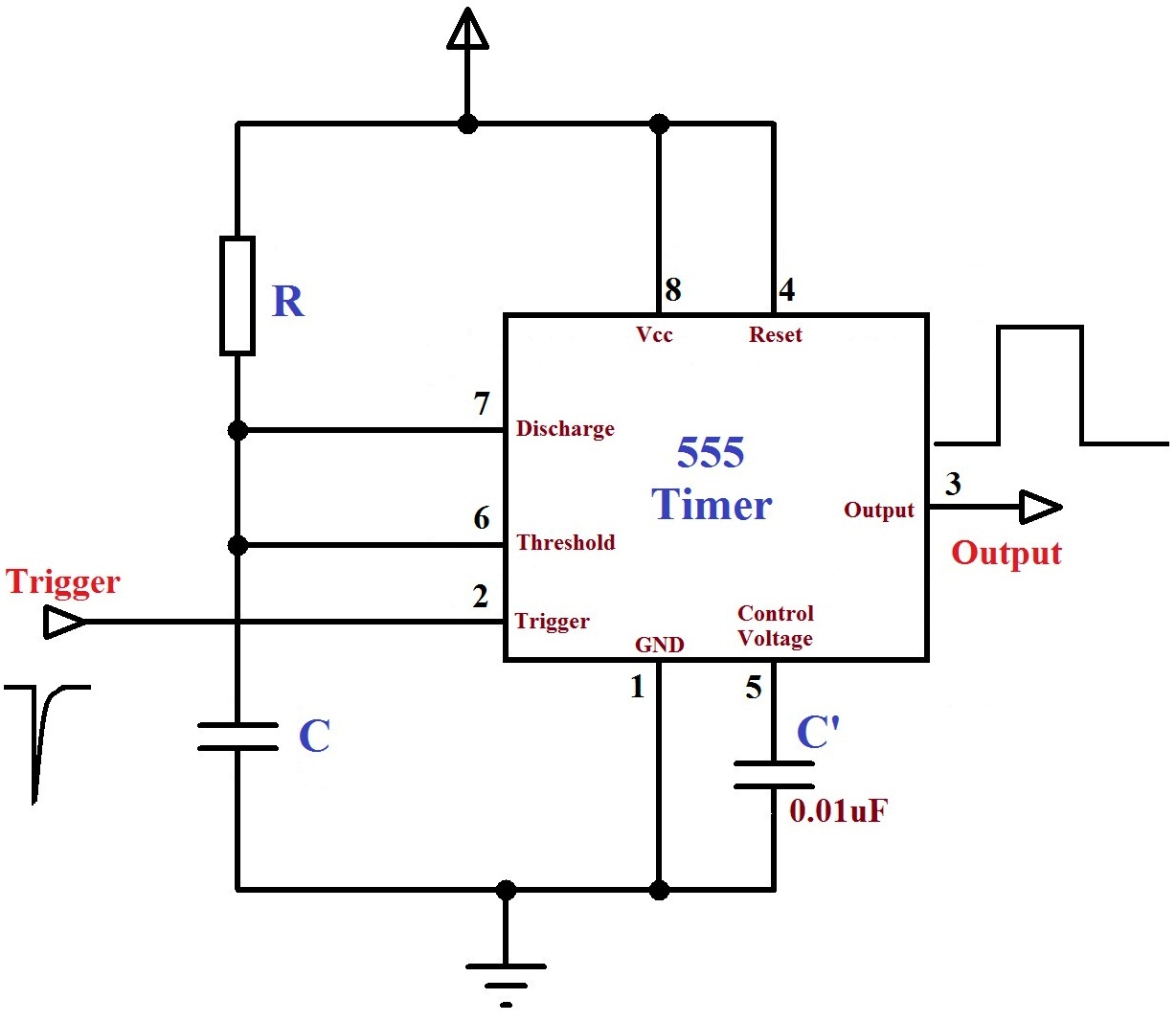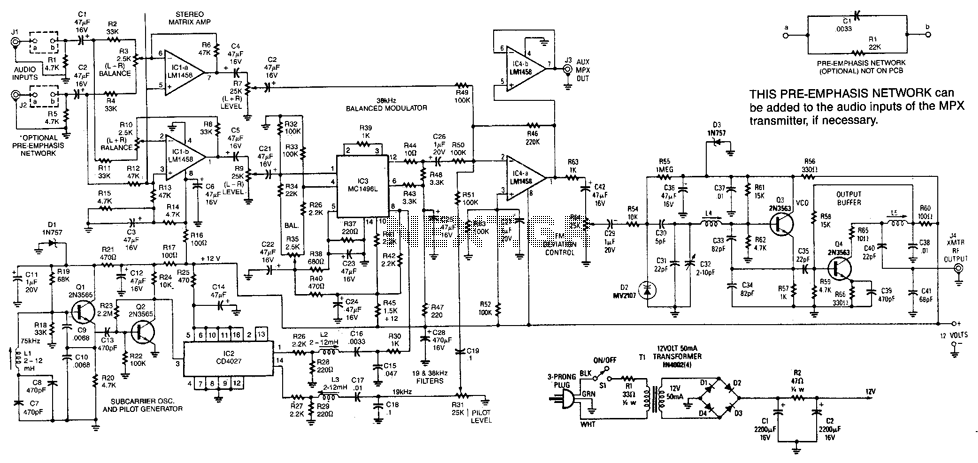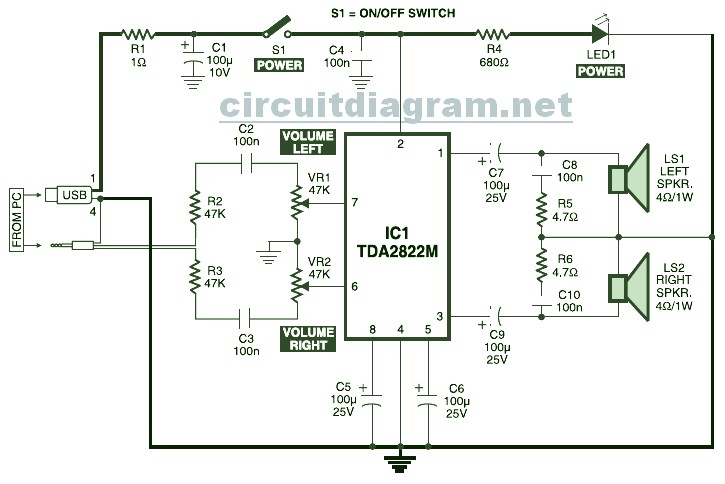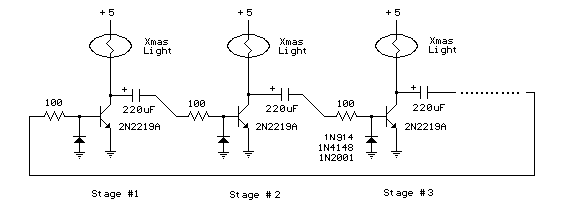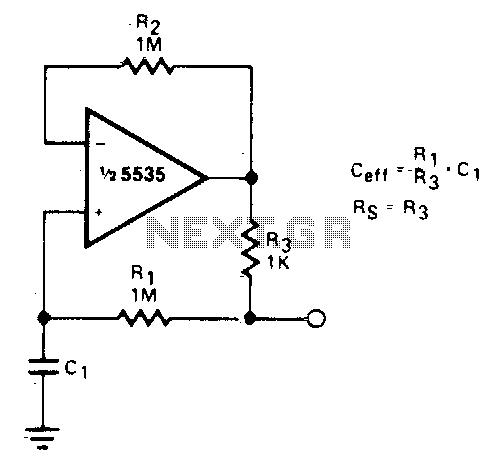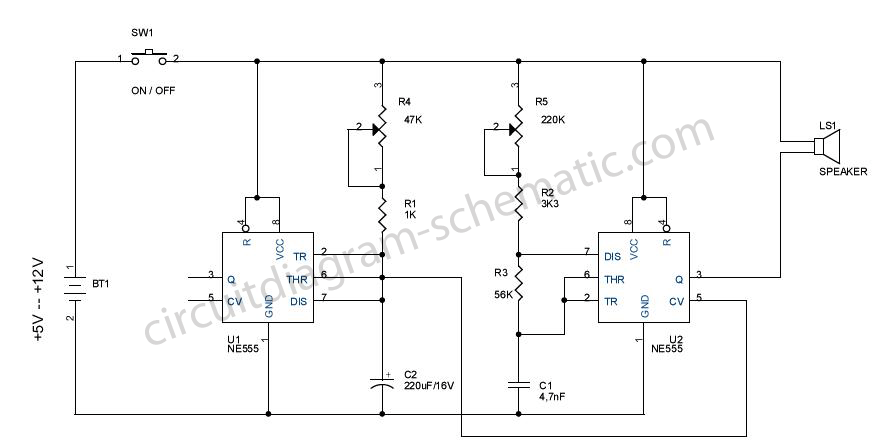
multi sound for guitars
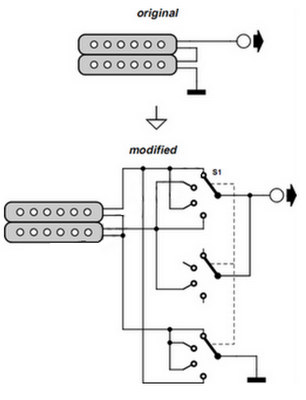
Electric guitars utilize coils, commonly referred to as pickups or elements by guitarists, to transform string vibrations into electrical signals. Typically, a guitar is equipped with multiple elements, allowing the musician to select which element or combination of elements generates the signal using a switch. Due to differences in construction and mounting positions, each element produces a unique sound. The elements can be broadly categorized into two types: single-coils and humbuckers. Single-coil elements consist of one core and coil for each string, while humbuckers are essentially two elements connected in series. Many humbuckers feature four connections, representing two single-coils, each with two connections. These individual coils are usually wired together, ensuring they operate in series. The proposed circuit enables the use of a humbucker with four connections in four distinct modes, each offering a unique sound. Modifications to the guitar involve changing the wiring and adding a four-position switch, which requires drilling holes in the guitar. However, if a control cover plate similar to that of a Fender Stratocaster is available, it is advisable to install the switch there to prevent damaging the guitar's wood while maintaining its aesthetic integrity. The schematic illustrates the electrical layout before and after the multisound modification.
The electric guitar circuit described involves a versatile pickup configuration that allows for a range of tonal variations. The core components include the humbucker pickup, a four-position switch, and the associated wiring. The humbucker pickup consists of two coils, which are designed to cancel out electromagnetic interference, thus producing a fuller sound with reduced noise. The four-position switch enables the guitarist to select between different wiring configurations, which can include options such as series, parallel, and split-coil settings.
In series mode, both coils are engaged, resulting in a higher output and a thicker tone, ideal for rock and heavier genres. The parallel mode allows both coils to work independently, producing a brighter and more articulate sound, which is often favored in clean tones or for jazz styles. The split-coil mode activates only one of the coils, mimicking the sound of a single-coil pickup, which is characterized by its sharp attack and clarity.
The wiring for this modification requires careful attention to ensure that each configuration is correctly implemented. The four-position switch must be properly connected to the output jack and the humbucker's terminals, with clear labeling to prevent confusion during operation. Additionally, the use of shielded wire is recommended to minimize noise and interference in the signal path.
To facilitate the installation of the switch, the use of a control cover plate is suggested, as it allows for a clean and professional appearance while preserving the integrity of the guitar body. The schematic diagram should clearly indicate the connections for each mode, providing a visual reference for both installation and troubleshooting.
Overall, this modification enhances the versatility of the electric guitar, allowing musicians to explore a broader range of sounds and styles, making it a valuable upgrade for both amateur and professional players.Electric guitars use coils (guitarists call them pickups or elements) to convert the vibrations of the strings into an electrical signal. Usually, a guitar has more than one element builtin, so that the musician can select with a switch which element or elements are used to generate the signal.
Because of the differences in construction of the ele ments and the varying positions of where they are mounted, each element sounds different. The elements can be roughly divided into two categories. There are the so-called single-coils` and humbuckers`. Single coil elements are elements that contain one core and coil for each string. Humbuckers can be regarded as two elements that are connected in series. Many humbuckers have four connections (actually two single-coils with two connections each). These two individual coils are usually interconnected with ¬xed wiring so that they are always used in series. The circuit proposed here offers the possibility of using a hum-bucker with four connections in no less than four different modes, each of which having its own sound.
The only things that have to be changed on the guitar are the wiring and the addition of a four-position switch. The latter requires drilling holes in the guitar of course, but if there is a control cover plate (along the lines of a Fender Stratocaster, for example) then it makes sense to put the switch there.
This avoids the need for drilling holes in the wood while keeping an (expensive) guitar reasonably unmarred. The schematic shows what the various things look like, electrically speaking, before and after the multisound modification.
🔗 External reference
The electric guitar circuit described involves a versatile pickup configuration that allows for a range of tonal variations. The core components include the humbucker pickup, a four-position switch, and the associated wiring. The humbucker pickup consists of two coils, which are designed to cancel out electromagnetic interference, thus producing a fuller sound with reduced noise. The four-position switch enables the guitarist to select between different wiring configurations, which can include options such as series, parallel, and split-coil settings.
In series mode, both coils are engaged, resulting in a higher output and a thicker tone, ideal for rock and heavier genres. The parallel mode allows both coils to work independently, producing a brighter and more articulate sound, which is often favored in clean tones or for jazz styles. The split-coil mode activates only one of the coils, mimicking the sound of a single-coil pickup, which is characterized by its sharp attack and clarity.
The wiring for this modification requires careful attention to ensure that each configuration is correctly implemented. The four-position switch must be properly connected to the output jack and the humbucker's terminals, with clear labeling to prevent confusion during operation. Additionally, the use of shielded wire is recommended to minimize noise and interference in the signal path.
To facilitate the installation of the switch, the use of a control cover plate is suggested, as it allows for a clean and professional appearance while preserving the integrity of the guitar body. The schematic diagram should clearly indicate the connections for each mode, providing a visual reference for both installation and troubleshooting.
Overall, this modification enhances the versatility of the electric guitar, allowing musicians to explore a broader range of sounds and styles, making it a valuable upgrade for both amateur and professional players.Electric guitars use coils (guitarists call them pickups or elements) to convert the vibrations of the strings into an electrical signal. Usually, a guitar has more than one element builtin, so that the musician can select with a switch which element or elements are used to generate the signal.
Because of the differences in construction of the ele ments and the varying positions of where they are mounted, each element sounds different. The elements can be roughly divided into two categories. There are the so-called single-coils` and humbuckers`. Single coil elements are elements that contain one core and coil for each string. Humbuckers can be regarded as two elements that are connected in series. Many humbuckers have four connections (actually two single-coils with two connections each). These two individual coils are usually interconnected with ¬xed wiring so that they are always used in series. The circuit proposed here offers the possibility of using a hum-bucker with four connections in no less than four different modes, each of which having its own sound.
The only things that have to be changed on the guitar are the wiring and the addition of a four-position switch. The latter requires drilling holes in the guitar of course, but if there is a control cover plate (along the lines of a Fender Stratocaster, for example) then it makes sense to put the switch there.
This avoids the need for drilling holes in the wood while keeping an (expensive) guitar reasonably unmarred. The schematic shows what the various things look like, electrically speaking, before and after the multisound modification.
🔗 External reference
